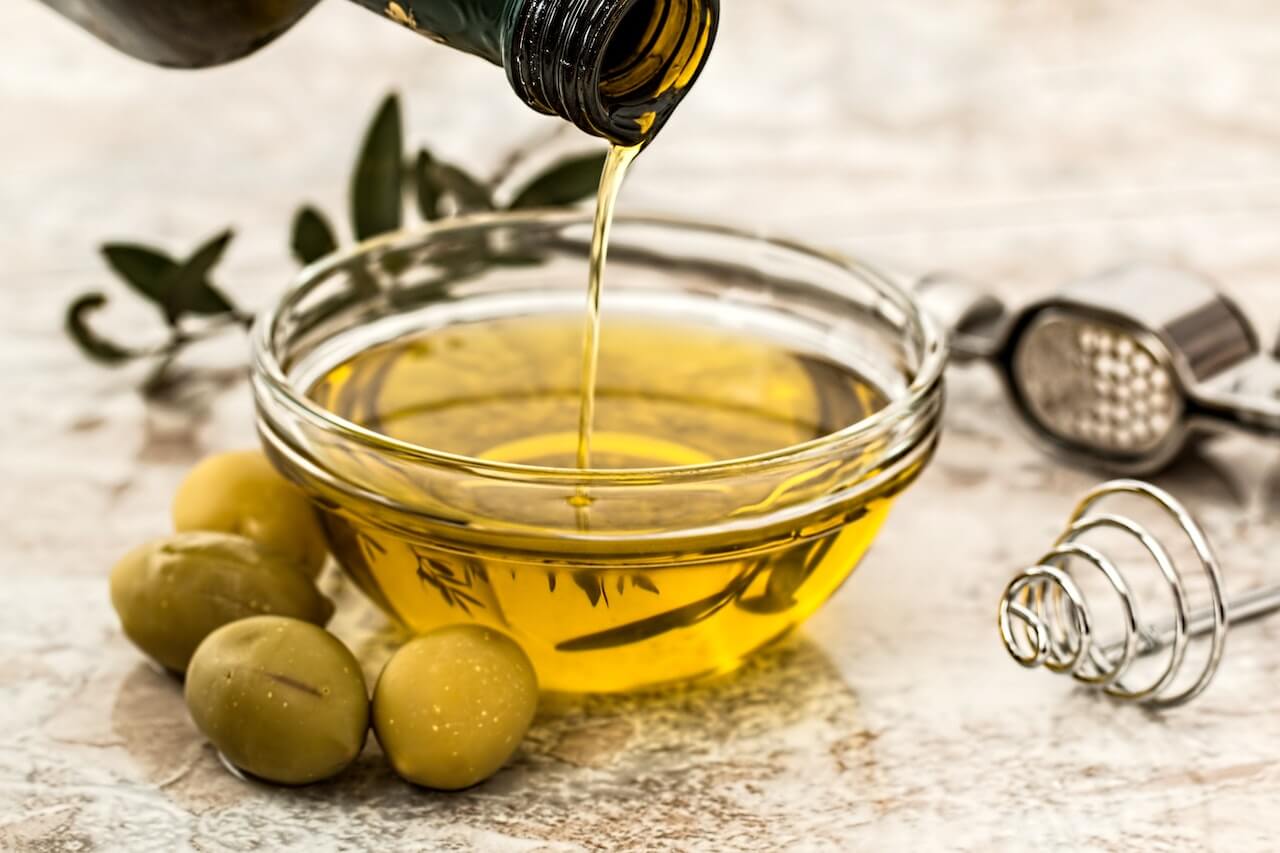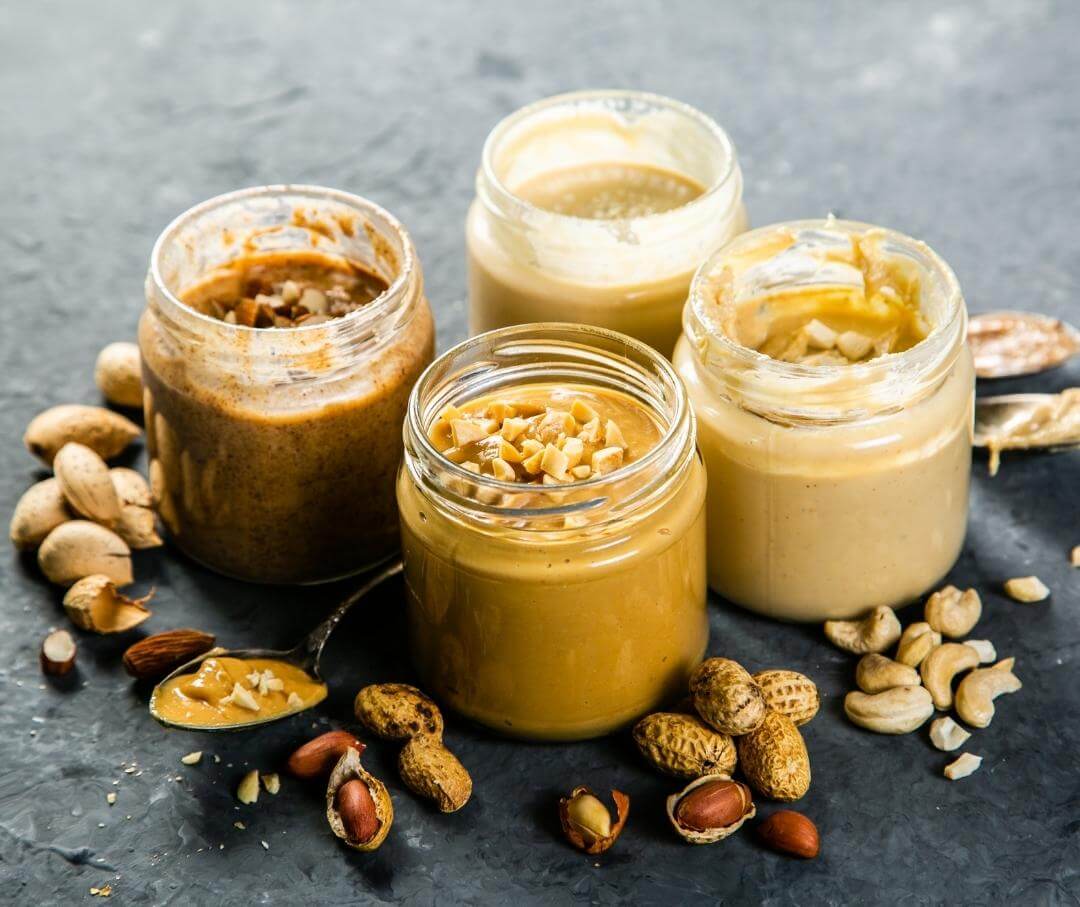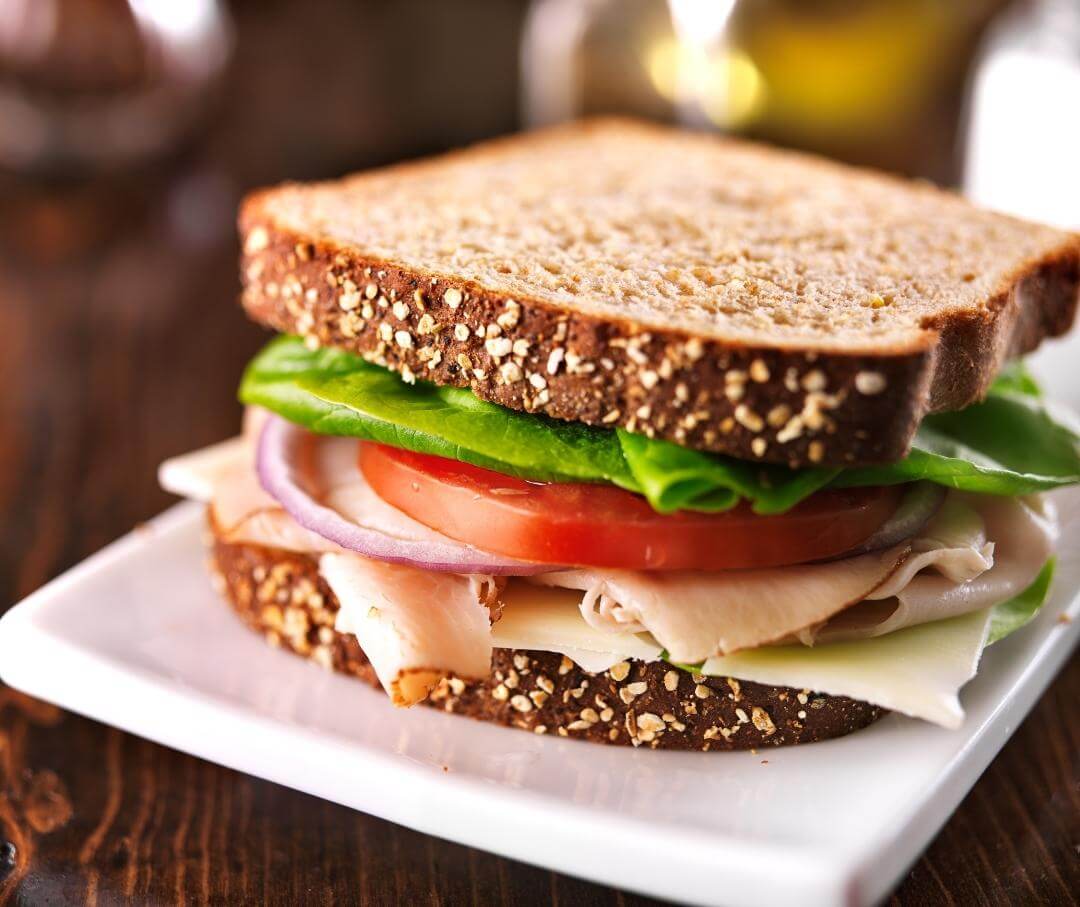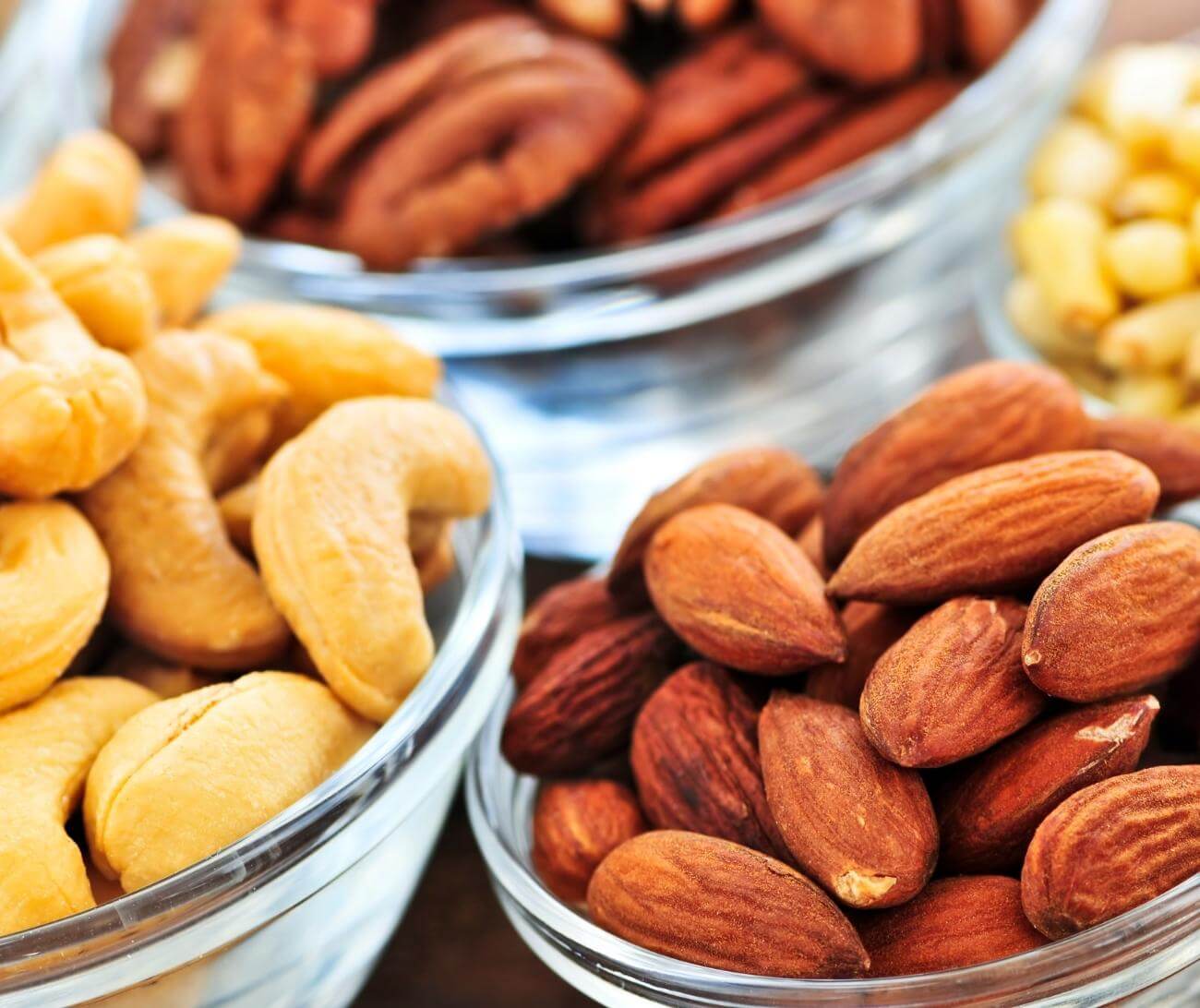What Is the Healthiest Oil to Cook With?
Many recipes call for some kind of fat source, like butter, oil, or even shortening. But you may be wondering which is the best option for your health. The short answer: oil. Oils are higher in heart-healthy fats, like monounsaturated or polyunsaturated fats and omega-3 fatty acids. These fats are less likely to promote insulin resistance, inflammation, and fat storage, and can reduce cardiovascular disease risk.¹
Making the switch to oil in your cooking and baking can give you a nutritional boost. But with so many options, which oil will you use? In this article we will discuss different oils, smoke points, and why both of these matter. Plus, we will provide a few tips for cooking with oil.
Why Is It Important to Use a Good Cooking Oil?
First, a good cooking oil makes your food taste great and helps you stay full. Second, choosing an oil with a higher smoke point can help make sure you are getting all the health benefits.
Oils change during cooking and have varying ranges of smoke points. A smoke point is when that oil is no longer considered stable and degradation (breakdown) occurs. When an oil degrades, some of the by-products have adverse effects on health and it doesn’t taste as good.²
Some of the harmful by-products are free radicals, acrolein, and fat oxidation. Long-term intake of foods cooked in degraded oils (cooked above their smoke point) leads to inflammation and stress on the body and is linked to increased cardiovascular disease.³
Acrolein is also produced when fats and oils are cooked to high temperatures along with frying of foods.⁴ Acrolein gives off a burnt flavor to your oil and food. The adverse effects add up over time, not just a one time use of oil that has passed its smoke point. The cardiovascular system is sensitive to acrolein leading to higher rates of cardiovascular disease.⁴
Here are some factors to consider when choosing the right oil for the job.
Smoke point
Each oil has a smoke point or range of temperatures that maintain the safety and taste of the oil. Stay within the ranges to prevent the excessive intake of acrolein and free radicals. Cooking at the right temperature also reduces fat oxidation and associated health problems.
Refined vs. Unrefined oils
Refined oils have undergone more processing compared to unrefined oils. While this can make it more shelf-stable, it also affects the quality of the oil. Heating oil too high causes fat oxidation, which can contribute to inflammation in the body.. Vegetable oils like soybean, canola, corn, and cottonseed are refined.⁵ Choose unrefined oils, like olive and avocado oil, when possible.
Fat composition
Each oil has a different fat composition. Oils with a higher monounsaturated and polyunsaturated fat (including omega-3 and omega-6 fatty acids) provide more health benefits compared to saturated or trans fats.¹ Saturated fat should make up a smaller portion of the fat composition of the oil, while trans fat should be avoided entirely.
6 Healthy Cooking Oils

1. Olive oil
Olive oil is a staple in kitchens for a good reason. This healthy cooking oil has a smoke point suitable for most at-home cooking methods and can be used in cold dressings, baking, and sautéing.
The smoke point of olive oil is about 404°F (206°C), a common cooking temperature.² Frying usually occurs around 325 to 375°F, occasionally going up to 400°F.⁶ A study comparing the stability of olive oil to other vegetable oils in frying foods found that olive oil maintains its natural antioxidants and has better stability with reduced fatty oxidation.⁷
Olive oil is rich in antioxidants, like vitamin E, and the fat content is 83% monounsaturated fatty acids.⁷,⁸ Consumption of olive oil is related to anticancer, anti-inflammation benefits, and cardiovascular disease prevention.⁸,⁹Olive oil, as part of a Mediterranean Diet, protects against obesity, metabolic syndrome, and type 2 diabetes.⁹
2. Avocado oil
Avocado oil can be used similarly to olive oil in cold or cooked recipes. It has a neutral flavor and a high amount of healthy monounsaturated fat content (76%) and 12% polyunsaturated fat.
The smoke point of virgin unrefined avocado oil is 386°F (197°C) but naturally refined expeller-pressed avocado oil has a high smoke point of 500°F (260°C).²,¹⁰ This makes it especially suitable for high-temperature cooking and maintains its stability.⁷
Avocado oil has been shown in animal studies to slow cancer growth and improve markers of cardiovascular disease and diabetes. But, has yet to be demonstrated in humans.¹¹ Additionally, avocado oil reduces inflammation and lipid levels in rats.¹²
3. Sesame oil
Sesame oil is one of the oldest oils used in cooking, but is less popular than olive or avocado oil. It has equal parts monounsaturated fats (40%) and polyunsaturated fats (40%). Sesame oil contains many nutrients: lignans, tocopherols, phytosterols, natural antioxidants, and bioactive compounds.¹³ Health benefits such as lowering cholesterol and anti-degenerative and neural protective properties are related to sesame oil consumption.¹³
Refined sesame oil has a smoke point of 410°F (210°C), while unrefined sesame oil has a lower smoke point of 350°F (177°C), so it would not be best in high-temperature cooking.
{{mid-cta}}
4. Peanut oil
Peanut oil comprises 46% monounsaturated fat and 32% polyunsaturated fat. Peanut oil is higher in omega-6 fatty acids, which are believed to be inflammatory.¹⁴ Peanut oil, like all oils, is a mixed source of healthy and unhealthy fats. Research shows that the overall blend of fats is still health-promoting with cardiovascular and antioxidant benefits.¹⁵
The smoke point of peanut oil is 438.8°F (226°C) making it a good option for many high-temperature cooking methods.² Many restaurants use peanut oil because it does not absorb the flavors of the foods fried in the oil and is stable at high temperatures.
Peanut oil can pose a peanut allergen risk, so please be careful for those with nut allergies.
5. Canola oil
Canola oil could be a good choice if you replace saturated fats with this oil. This oil has a neutral flavor and can be used in most cooking styles or temperatures.
The smoke point of canola oil is high at 406°F (208°C).² Until recently, canola oil has been a popular oil choice. A mixed consensus exists for canola oil due to concerns in processing and its higher amount of omega-6 fatty acids.
Canola oil is very low in saturated fat and high in monounsaturated fat (64%) and polyunsaturated fat (28%). Canola oil is higher in omega-6 fatty acids but also has beneficial omega-3 fatty acids.¹⁶ Research indicates that when individuals replace saturated fats with canola oil, blood cholesterol levels are reduced, and insulin sensitivity improves.¹⁷
Harvard experts explain that canola oil is extracted using the chemical hexane and high temperatures.¹⁸ They explain that a trace amount of hexane exists in the final canola oil product, but not a concerning amount.
6. Safflower Oil
Safflower oil is primarily monounsaturated fat (75%) and polyunsaturated fat (14%) with minimal saturated fat (4%).¹⁹ Research among women with type 2 diabetes showed that using safflower oil reduced abdominal fat, increased muscle, significantly lowered fasting glucose levels.²⁰
The smoke point of safflower oil is high with a range of 440-510°F (227-265°C) and can be used in all high-temperature cooking. This neutral flavored oil can be used for marinades and also for high-temperature cooking. Consider using safflower oil for its versatility and healthy fat composition.
Oils to Minimize or Avoid
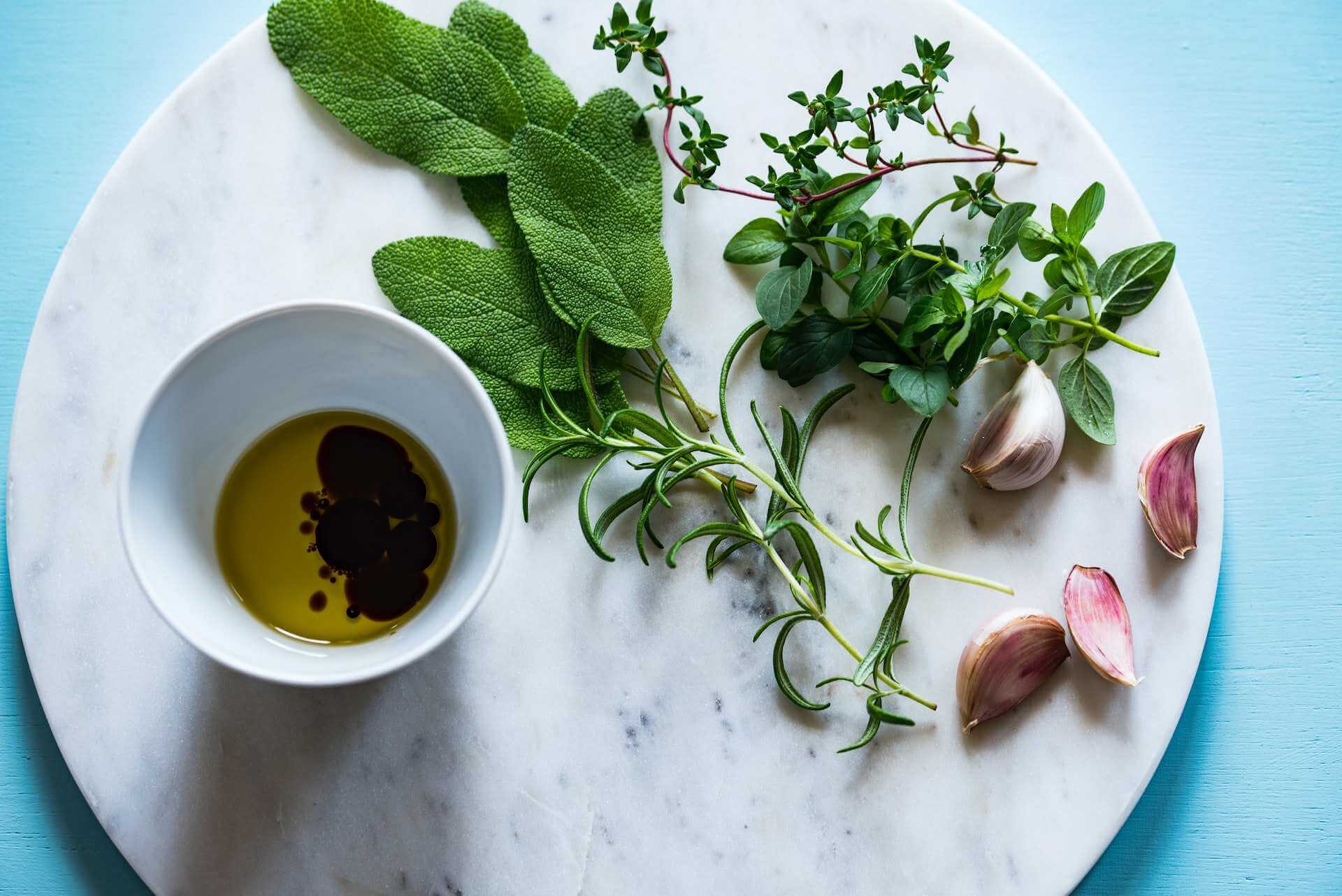
Fish or algae oil
These oils are meant to be used as a dietary supplement to obtain large amounts of omega-3 fatty acids. Fish oil is taken from fatty fish, while algae oil is a vegetarian supplemental oil to boost omega-3 intake. They are not to be used for cooking.
Flax or flaxseed oil
This oil is very high in beneficial omega-3 fatty acids. Studies indicate that flaxseed oil helps reduce insulin levels and increase antioxidant capacity in the body.²¹ You should not cook with flax oil due to its low smoke point of 225°F (107°C). It’s a perfect room temperature or cold salad dressing ingredient.
Palm oil
Palm oil provides about half of its fat content from saturated fats making this an unhealthy fat due to health concerns.
Walnut oil
Walnut oil is rich in omega-3 fatty acids, but like flaxseed oil, it has a very low smoke point of 320°F (160°C) and should be reserved for salad dressings. Research indicates cardiovascular benefits from using walnut oil.²³
Hydrogenated oils
Partially hydrogenated oils contain high amounts of trans fats, which have no benefit for the body and cause cardiovascular and metabolic harm. The FDA required that by 2018, no food products can contain these oils.²⁴ Fully hydrogenated oils are still in processed food products like vegetable shortening, packaged baked goods, and coffee creamers. Fully hydrogenated oils are high in saturated fats and used primarily in pre-packaged foods high in sugar and fat and low in beneficial nutrients, making them one of the worst cooking oils.
Tips to Cook With Healthy Oils
Get rid of oil after reaching the smoke point
If you get distracted while cooking, and the oil starts to smoke or catch fire, toss the oil, clean the pan and start over. No need to measure the temperature of the oil. If it smoked, you reached the smoke point.
Store oil in a dark and cool place
Exposure to light and heat breaks down oils. Healthy cooking oils can be more expensive. Protect them by storing them properly and buying them in smaller containers to prevent waste.
Don’t reuse any cooking oil
Once cooking oil reaches its smoke point, it is less stable. Repeated use of cooking oils leads to more fat oxidation and dangerous by-products.
Limit deep-frying food
Some of these oils withstand the high temperature of deep-frying, but that doesn’t make it a healthy cooking method. Deep frying will increase your fat intake considerably.
It is essential to choose suitable healthy oils for the job. Incorporating healthy fats can help you lose weight, maintain stable glucose levels, and stay full between meals. Learn more about nutrition and weight management with Signos’ science-backed advice. You can learn how your body responds to different foods and find healthy recipes.
- Item 1
- Item 2
- item 3
Topics discussed in this article:
References
- https://pubmed.ncbi.nlm.nih.gov/30228616/
- https://actascientific.com/ASNH/pdf/ASNH-02-0083.pdf
- https://pubmed.ncbi.nlm.nih.gov/34660660/
- https://pubmed.ncbi.nlm.nih.gov/28084565/
- https://www.weightandwellness.com/resources/articles-and-videos/fats-avoidfats-include-macular-degeneration
- https://extension.okstate.edu/fact-sheets/deep-fat-frying-basics-for-food-services.html#:~:text=support%20competitive%20pricing.-,Frying%20Temperature,crisp%20texture%20and%20good%20flavor.
- https://pubmed.ncbi.nlm.nih.gov/20678538/
- https://pubmed.ncbi.nlm.nih.gov/29495598/
- https://pubmed.ncbi.nlm.nih.gov/30487558/
- https://chosenfoods.com/blogs/central/avocado-oil-as-a-high-heat-cooking-oil
- https://pubmed.ncbi.nlm.nih.gov/34146454/
- https://pubmed.ncbi.nlm.nih.gov/24719499/
- https://pubmed.ncbi.nlm.nih.gov/35569244/
- https://nutritiondata.self.com/facts/fats-and-oils/506/2
- https://pubmed.ncbi.nlm.nih.gov/24580558/
- https://nutritiondata.self.com/facts/fats-and-oils/9129/2
- https://pubmed.ncbi.nlm.nih.gov/23731447/
- https://www.hsph.harvard.edu/nutritionsource/2015/04/13/ask-the-expert-concerns-about-canola-oil/
- https://nutritiondata.self.com/facts/fats-and-oils/574/2
- https://pubmed.ncbi.nlm.nih.gov/19535429/
- https://pubmed.ncbi.nlm.nih.gov/31190359/
- https://www.worldwildlife.org/industries/palm-oil
- https://pubmed.ncbi.nlm.nih.gov/21677123/
- https://www.fda.gov/food/food-additives-petitions/final-determination-regarding-partially-hydrogenated-oils-removing-trans-fat




